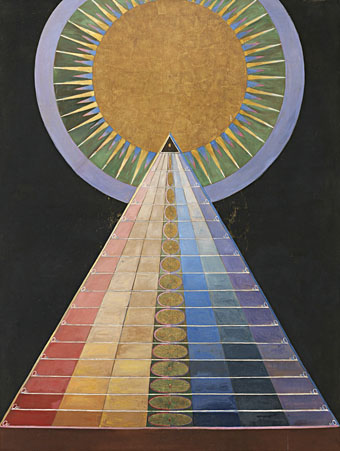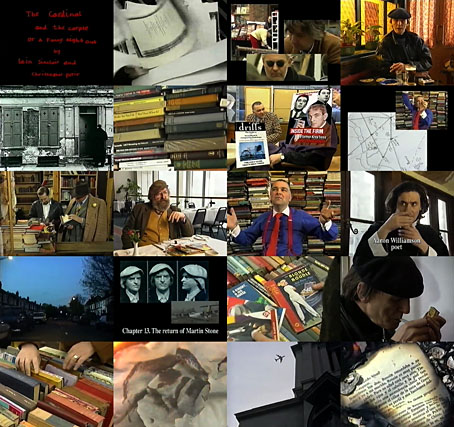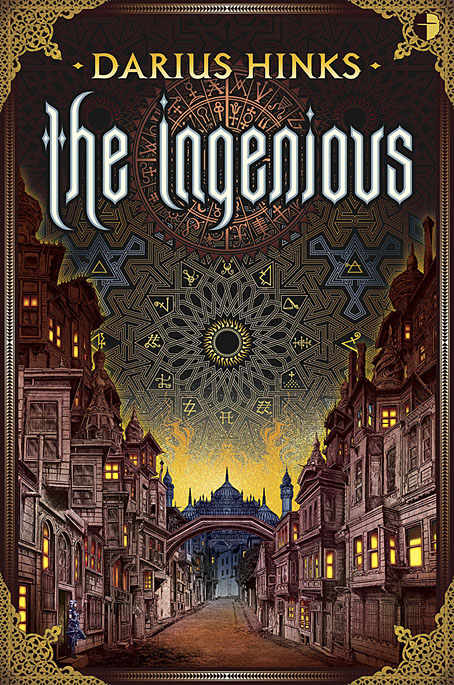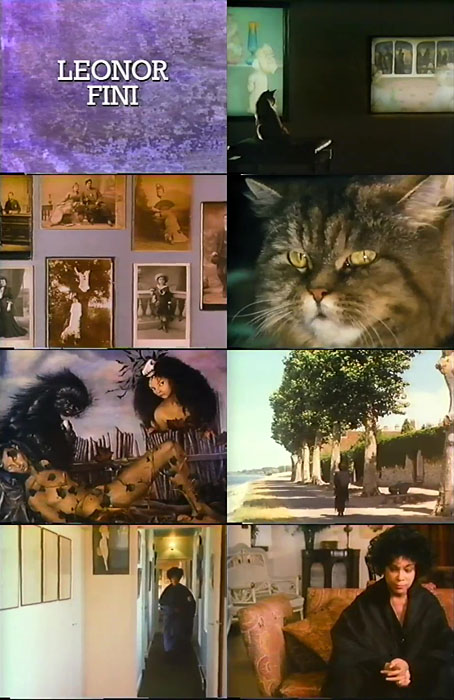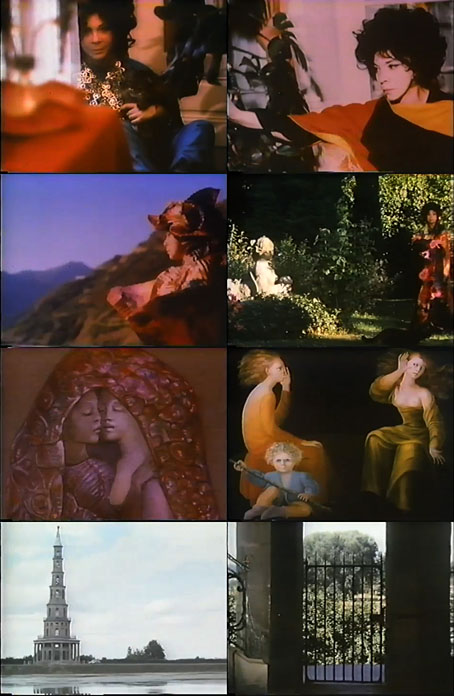Group X, No. 1, Altarpiece (1915) by Hilma af Klint.
“Like Kandinsky, and other pioneers of abstract art, af Klint was deeply immersed in theosophy and anthroposophy. But she seems to have taken that interest much further than her male counterparts, participating in (and later leading) séances with a group of women friends. Whatever the spirits said, af Klint did.” Nana Asfour on pioneering abstract painter, Hilma af Klint.
• Four electronic artists reflect on the influence of composer Laurie Spiegel. Spiegel’s The Expanding Universe (1980) is reissued by Unseen Worlds next month. Related: Laurie Spiegel in 1977 playing the Bell Labs Digital Synthesizer.
• At Expanding Mind: Gurdjieffean writer and DuVersity director Anthony Blake talks with Erik Davis about dialogue, synergy, mind between brains, the trouble with teachers, and the gymnasium of beliefs in higher intelligence.
• Mixes of the week: Flashing Noise Mix by Tim Gane, Secret Thirteen Mix 268 by Bérangère Maximin, and Samhain Séance Seven: A Very Dark Place – Prologue by The Ephemeral Man.
• Geeta Dayal on Broken Music (1989), a book about sound art edited by Ursula Block and Michael Glasmeier which is now available in a new edition from Primary Information.
• The Sainsbury Archive showcases the graphic design of several decades of the supermarket chain’s products.
• More of the usual suspects: Michael Moorcock and Alan Moore in 2006 discussing Moorcock’s career.
• “Karloff the Uncanny”: Joe Dante talks to Stephanie Sporn about the attraction of old film posters.
• Mexico City, another preview (and a psychedelic one) of Randall Dunn’s forthcoming solo album.
• At Haute Macabre: Timeless Phantom Interludes: The Photography of Jason Blake.
• Mark Valentine on the current state of Britain’s secondhand book shops.
• At I Love Typography: Unicorns, Frogs and the Sausage Supper Affair.
• “I never wanted to be a cult film-maker,” says John Waters.
• Artist Arik Roper chooses some favourite album covers.
• Broken Head (1978) by Eno, Moebius, Roedelius | Broken Horse (1984) by Rain Parade | Broken Aura (2000) by Coil

